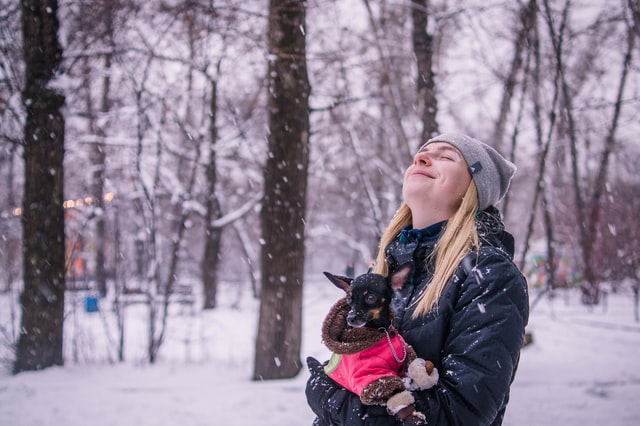 We all love our family animals and we want to keep them safe and healthy. Winter months can bring new dangers to your dog. Below are some of the top dangers that could cause harm to your furry family member in the winter:
We all love our family animals and we want to keep them safe and healthy. Winter months can bring new dangers to your dog. Below are some of the top dangers that could cause harm to your furry family member in the winter:
- Antifreeze. Antifreeze is deadly to people and pets! It has a sweet taste that makes it enticing to animals for consumption. Even a small amount can cause kidney failure in your dog. Be sure to clean up any antifreeze from your driveway and if you change out your antifreeze, be sure not to keep it covered or stored so that your dog is unable to drink it. Also, be sure to dispose of it appropriately. For added safety, purchase antifreeze made with propylene glycol and avoid ethylene glycol.
- House plants. There are certain seasonal plants that can be poisonous to your dog. Poinsettia, holly and mistletoe are toxic to dogs and while not usually deadly, they can cause upset stomach and/or mouth irritation. It is best to avoid these plants or keep them where your dog cannot ingest them.
- Ice and Snow. Most dogs love to play in the snow, but like humans, they can get frost-bite. On those snow days, be sure to check your dog’s pads and the space between his toes for signs of frost-bite. And don’t forget to wipe his paws with a clean damp cloth to remove winter irritants such as salt, antifreeze and other chemicals after a walk.
- Freezing Temperatures. Dogs have a built-coat so we think they are always warm. But, dogs can feel the cold just like people. When exposed to extreme temperatures, dogs can get hypothermia. Slim dogs with short hair and dogs who are elderly or young are more likely to feel the cold than dogs with thick coats that are well suited for cold environments. If your dog is susceptible to hypothermia, you could use a doggy jacket when the temperatures are sub-zero and limit outside time to 15-20 minutes at a time.
- Lack of Exercise. The days are shorter in the winter months. For many people, it is dark when you leave in the morning and dark when you come home. That means your dog may not be getting enough exercise. Inactivity could cause your dog to gain some weight, which could lead to certain illnesses. You could safely walk your dog in the dark by purchasing reflective gear for both your and your dog.
- Shelter. When the temperatures are at or below sub-zero, your dog should be brought indoors. If your dog must be outside, it’s best to provide a raised shelter to help keep your fur baby warm. You can help make a cozy shelter using cedar shavings or straw and be sure to add a warm bed and blankets.



